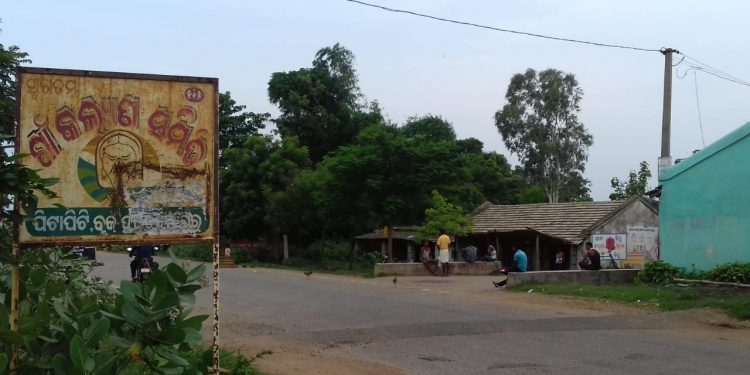Keonjhar: If you happen to be travelling on the Naranpur-Brahamanipal road from Naranpur in Keonjhar district, a signage mentioning the name of a village, just before Harichandanpur, would definitely attract your attention.
The village is titled ‘Pitapiti’, according to the signage.
The literal meaning of the word ‘Pitapiti’ is fighting. Hence the name attracts people and evokes curiosity. They also ask the villagers to clarify the reasons for such a name. Youngsters also indulge in taking selfies with the signage.
However, in contrary to what the name suggests, the residents of the village ‘Pitapiti’ are cordial, humble and docile to even outsiders.
The village was established approximately 250 years ago, according to some senior villagers. It was sparsely populated then and was a haven for birds and various types of animals.
Initially, some six to eight ironsmith families used to live in the village. Locally they were known as ‘Pita Kamara’. They earned their livelihood from making and selling iron wares. They used to live on forest fruits.
However, after living peacefully for some time, differences grew among the families. According to tales, they frequently engaged in fights. Ultimately all decided to leave the village and go on their separate ways.
However elders do not think that this is the exact reason for the village being called ‘Pitapiti’. Some suggested that as the ‘Pita Kamaras’ were the first inhabitants of the village it may have derived its name from the word ‘Pita’.
According to Paresh Chandra Sethy, a resident who has studied a lot on the village’s nomenclature, the soil and the climate of the village is very conducive for cultivation. Hence people from ‘Chasha’, ‘Sethy’ and ‘Barik’ communities settled in the village and started growing crops.
Some say these people named the village so. However, the village is presently inhabited by people from different communities like ‘Munda’, ‘Naik’, ‘Kisan’, ‘Mahanta’, ‘Patra’, ‘Nahak’, ‘Brahman’, ‘Kamar’, ‘Chasha’, ‘Sethy’ and ‘Barik’.
The village is 45 kilometres from Keonjhar district headquarters and five kilometers from Harichandanpur block headquarters. While 398 families are currently residing in the village, its population is approximately 1537.
In 2000, the Pitapiti panchayat was formed which included six villages including Pitapiti
The festivals of Raja, Maghe Parba, Ashadhi, Gahma Purnima (Raksha Bandhan), Makar, Prathamastami and Deepabali are observed with great fanfare by the villagers. The tribal festivals need special mention as they are celebrated with all the traditions, adding colour to the lives of the people living in ‘Pitapiti’.
The villagers live on agriculture and minor forest produce.
The village is nestled in the lap of nature. On one side it has Kurein Jodi river while to the south of the village there the Kuanjharan hill while towards the north there is the Jamunalia rivulet.






































